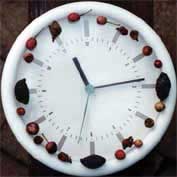
Anecdotal & incidental observations:
Plant species
Latin name |
Common name |
Observation(s) |
| Metrosideros fulgens | Orange or scarlet rata | Effects of possums, early and heavy flowering |
| Myrisne salicina | Toro | Kokako eating toro |
| Corynocarpus laevigatus | Karaka | Dispersal by thrush |
Animal species
Latin name |
Common name |
Observation(s) |
| Metrosideros fulgens | Orange or scarlet rata | Effects of possums, early and heavy flowering |
| Myrisne salicina | Toro | Kokako eating toro |
Metrosideros fulgens: orange or scarlet rata
Question to the
phenology group from
Astrid Dijkgraaf: Tuesday, 8 April 2003: Effect
of possums
Just spent a couple of weeks in the bush at four different locations (10-14 and 24 to 28 March, Trains, Mt Humphries, Thompsons Clearing, Mangarau hut all in the Waitotara Conservation Area). One of the locations (Trains) was a non-treatment site for a large aerial 1080 possum control operation (that included the other three sites) six years ago. What struck me was the the orange or scarlet rata (Metrosideros fulgens) was much more obviously in flower at sites that had been treated than the site without treatment. I hadn't consciously noticed any possum browse on this species before so was rather surprised by this observation. The apparent abundance of M. fulgens correlated well with greater conspicousness/numbers of tui and bellheards heard and seen.
Does anybody else have any observations on whether possums affect the flowering of M. fulgens elsewhere?
Replies:
Wednesday, 9 April 2003
I was just noticing profuse seed capsules on fulgens at a site where possum
numbers are unlikely to be very high following previous control. Possums are eat
flowers and buds of northern rata so it's quite possible they like them on
fulgens too, even if they aren't keen on browsing the leaves. I can't say I've
noticed whether fulgens has better flowering/fruiting in low vs. high possum
areas though.
Thursday, 10 April 2003
I vaguely remember recording possum browse on M. fulgens in the 1990's on
the SE side of Karioi mountain before possum control began in 1994. Astrid- I'm
not surprised given their love for pohutukawa flowers and I've often noticed
lots more rewarewa flowers dropped on the ground in possum areas compared with
low pop'n areas, in much the same way as you sometimes find fivefinger leaves.
Tuesday, 8 April
2003
Good question. I remember quite distinctly theres awesome fulgens flowering I
noticed on Mt Pirongia when I went tramping up there in mid March. Hillsides are
literally orange in some places. Best Ive ever seen by far. I was told there'd
been a good 1080 job up there recently. I remember thinking at the time that
maybe it was something to do with this but I've never noticed possum impacts on
this species. Noticed a fair bit of fulgens
flowering around the place during March so was wondering if it was a bit earlier
this year??
Tuesday, 8 April
2003
This has been a phenomenal flowering season for rata
Myrisne salicina: toro
Question
to the phenology group from
Kapiti Field Centre: Tuesday, 8 April 2003: Kokako
eating toro
Here on Kapiti Island, as part of our kokako monitoring programme we collect many feeding observations, and have got to know their preferences quite well. We were quite surprised to find that there have been 15 observations of them getting into Toro fruit this year, with only 3 obs. in previous seasons (about 4 summers of consistent feeding records, and a couple of years worth of more incidental notes). Given that several of their normally preferred fruits: 5 finger, mahoe and kanono have been not readily, or at all, available this season then it would be interesting to know if this sudden interest in toro is due to:
A)it's not a favoured fruit, but there's been so little of anything else available that they're begrudgingly eating it
B)it is a favoured fruit, but one that is only occasionally available in large quantities
What would answer this is knowing whether toro fruits most years (suggesting A) or whether it has very rare mast years with little or no fruit produced between times (suggesting B). Or somewhere in between that would further confuse us. Yes, it's yet another case of birdwatchers only noticing the plants when the birds start eating them!!! Terrible I know!
Tuesday,
8 April 2003
I haven't had enough observations of toro (Myrsine salicina) to be able to
answer this. My impressions from ground Foliar Browse Index (since toro is
rather possum palatable) is that it does fruit every year, but not sure if the
amount of fruit varies greatly from year to year. I'll check fruiting
patterns of MYRaus at home tonight, that might give some clues. In the
mean time any further observations from other people out there?
Corynocarpus laevigatus
Dispersal by
thrush
Seen: thrush sitting on fruit and digging claws into fruit, then flying off with it




